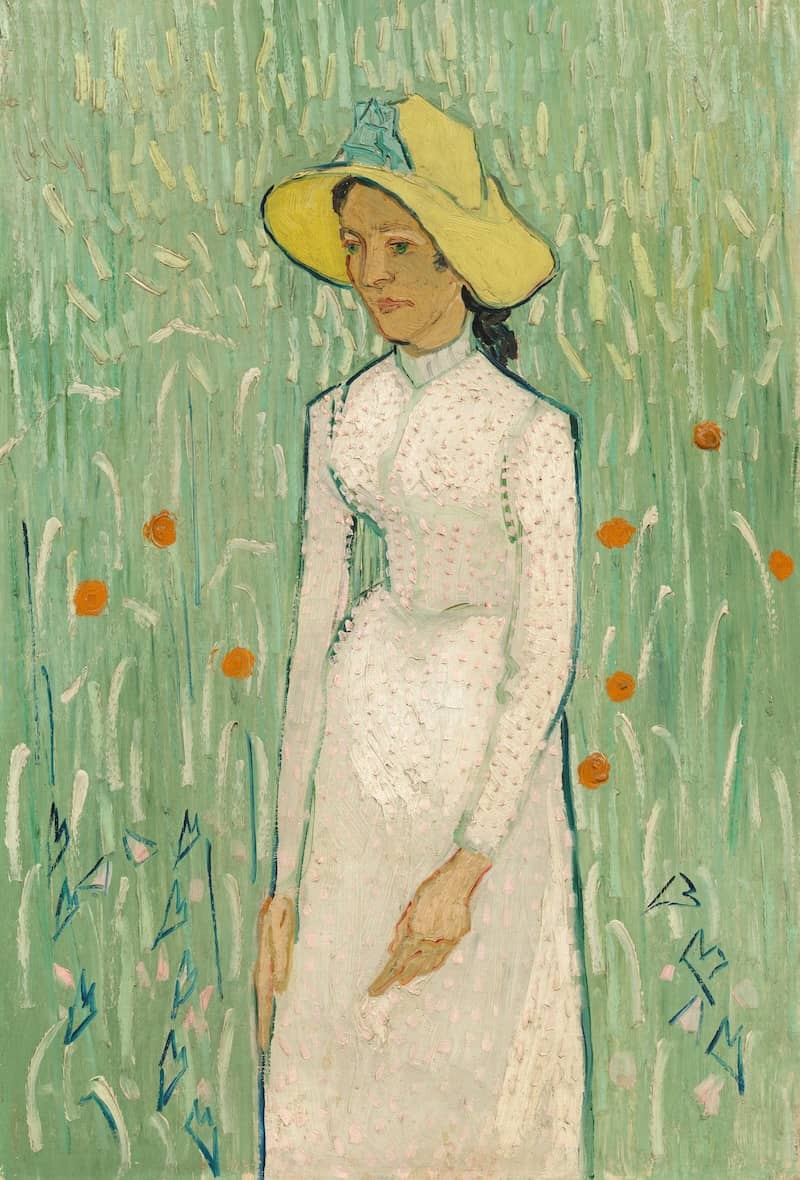Girl in White, 1890 by Vincent Van Gogh

Girl in White (also known as Young Girl Standing Against a Background of Wheat) was painted by Vincent van Gogh in 1890 in Auvers-sur-Oise, France, during the last months of his life.
In May 1890, Van Gogh traveled from Saint-Remy to Paris where he had a three-day stay with his brother, Theo, Theo's wife Johanna and their new baby Vincent. Van Gogh found that unlike his past experiences in Paris, he was no longer used to the commotion of the city, and was too agitated to paint. His brother, Theo and artist Camille Pissarro developed a plan for Van Gogh to go to Auvers-sur-Oise with a letter of introduction for Dr. Paul Gachet, a homeopathic physician and art patron who lived in Auvers. Van Gogh had a room at the inn Auberge Ravoux in Auvers and was under the care and supervision of Dr. Gachet with whom he grew to have a close relationship, "something like another brother." Gachet and his daughter were both subjects for Van Gogh's paintings.
For a time, Van Gogh seemed to improve. He began to paint at such a steady pace, there was barely space in his room for all the finished paintings. From May until his death on July 29, Van Gogh made about 70 paintings, more than one a day, and many drawings. Van Gogh painted buildings around the town of Auvers, such as The Church at Auvers, portraits, and the nearby fields.
But for all his appearance of a renewed well-being," observes Wallace, "his life was very near its end." Illness struck Theo's baby, Vincent. Theo had both health and employment issues; he considered leaving his employer and starting his own business. Gachet, said to have his own eccentricities and neurosis, caused Van Gogh sufficient concern to question, "Now when one blind man leads another blind man, don't they both end up in the ditch?"
After visiting Paris for a family conference, Van Gogh returned to Auvers more bleak. In a letter he wrote, "And the prospect grows darker, I see no future at all."




















